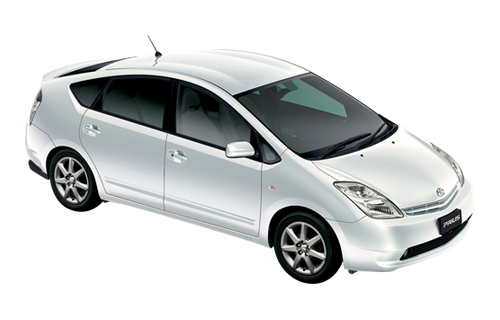

| Grade | S | G | |
|---|---|---|---|
| Model type & weight |
Model type | ZA-NHW20-AHEEB | ZA-NHW20-AHEGB |
| Curb mass(kg) | 1250 | 1270 | |
| Dimensions | Length(mm) | 4445 | 4445 |
| Width(mm) | 1725 | 1725 | |
| Height(mm) | 1490 | 1490 | |
| Wheelbase(mm) | 2700 | 2700 | |
| Engine | Engine code | 1NZ-FXE | 1NZ-FXE |
| Engine type | Water-cooled, in-line 4-cylinder, DOHC (transverse engine) | Water-cooled, in-line 4-cylinder, DOHC (transverse engine) | |
| Displacement(cm3) | 1496 | 1496 | |
| Max. output kW(PS)/r.p.m. | 57/77/5000 | 57/77/5000 |
| * | The specifications are those of representative model grades. |
| * | Max. output represents a net rating. In the above table, digits separated by slashes ( / / ) stand for kW, PS, and r.p.m., respectively. |
| * | The model numbers of these vehicles are NHW20(1500). |
| Plant | Tsutsumi plant, Fujimatsu plant(Toyota Auto Body Co.,Ltd.) [from Oct. 2004] |
|---|
"Prius" is Latin for "prior" or "previous."


















The Toyota Hybrid System (THS) used in the previous model was upgraded to THS II, while the engine (1NZ-FXE) boosted its revolution speed and the motor (3CM) increased its output by 50% to 50 kW. The fuel efficiency level improved to 35.5 km/l (under the 10-15 mode test cycle), which was among the best in the world. The Prius also came equipped with a number of world's first technologies, including the Intelligent Parking Assist system to semi-automate curbside parking, the Steering-assisted Vehicle Stability Control system (S-VSC) to unify the control of anti-skid and power steering systems, and an electric inverter-controlled automatic air conditioner that remained operational even when the engine was stopped in the idling reduction mode.